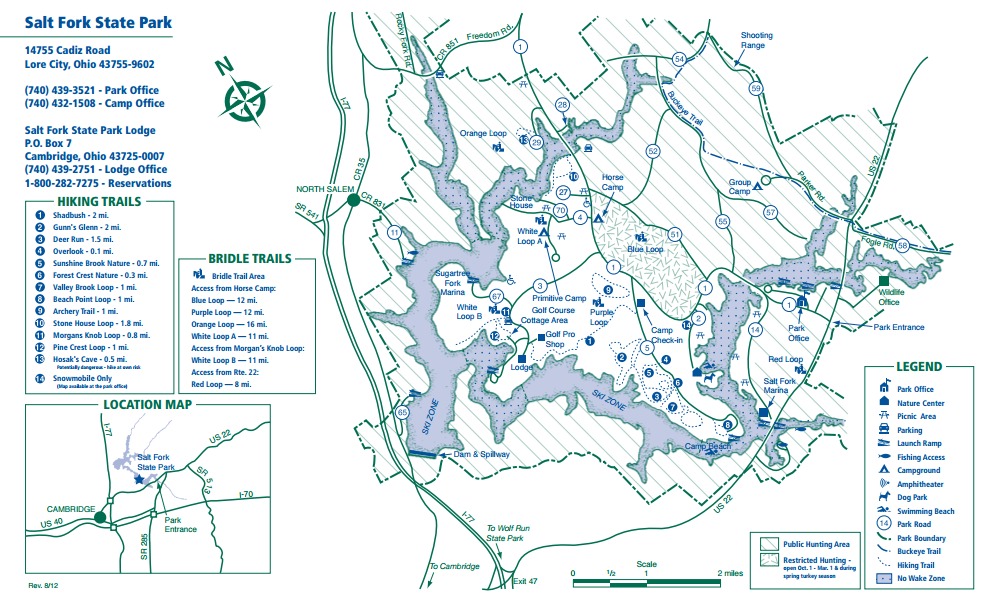Salt Fork SP--Hosak's Cave Area

Salt Fork SP--Hosak's Cave Area
Lore City, Ohio 43755
Salt Fork State Park Official WebsiteSalt Fork State Park map
Hiking Salt Fork State Park webpage
Salt Fork Wildlife Area map
About this Location
Hosak’s Cave in Salt Fork State Park is a scenic and roomy rock shelter that has protected passers-by from rainy weather for many years. Visitors to Hosak’s Cave can attest that the geologic processes that formed this ancient structure are ongoing. Though there were no eyewitnesses, about two decades ago, a massive chunk of the ceiling gave way and crashed to the floor, changing the face of Hosak’s Cave forever. In one dramatic instant, the exceedingly simple and gradual force of trickling groundwater over thousands of years demonstrated its power to reclaim the rock it created and transform it.
Hosak’s Cave is visible from the Hosak’s Cave Trail, which begins in the parking area on Park Road 29. The trail is a rocky, uphill hike. Visitors should exercise caution and remain on the marked trail.
About Salt Fork State Park
See all hotspots at Salt Fork State Park
Before settlement, Ohio lay in the heart of a vast forest wilderness stretching from the Appalachian Mountains to the Great Plains. None of the world’s hardwood forests surpassed this one in the variety and size of trees. Ohio’s forest was a magnificent sight and an enormous challenge for settlers determined to clear and till the land. Towering oaks, hickories, beeches, maples, walnuts, ashes, and chestnuts, some over 150 feet tall, rose from the rich fertile soil below. By 1900, most of Ohio’s original forest was decimated. In its place stood wheat, corn, oats, hay, and thriving cities
Through conservation efforts over the past few decades, a magnificent regrowth has occurred. Today, nearly 30 percent of the state is once again supporting a thriving forest. This is most evident in the rugged, unglaciated hill region of southeastern Ohio including Salt Fork State Park. Salt Fork contains a blend of rich woodlands and rolling meadows. The park contains diverse populations of plant and animal life. White-tailed deer, wild turkey, ruffed grouse, red fox, gray squirrels, and barred owls are well established within Salt Fork. Songbirds such as the scarlet tanager, cardinal, goldfinch, Kentucky warbler, and others provide delight for birdwatchers.
Spectacular wildflowers such as wild geranium, large-flowered trillium, violets, asters, and goldenrod line the forest floor and meadows. In spring, the melody of wood frogs, chorus frogs, and spring peepers echo through the park.
Salt Fork is said to have derived its name from a salt well used by Native Americans which was located near the southeastern corner of the park. Salt Fork lies in the unglaciated portion of the state. Throughout the area, thick-bedded, erosion-resistant sandstone or conglomerate overlays more erosive siltstone, shale, coal, and limestone layers, resulting in shelter caves, such as Hosak’s Cave, along with small waterfalls in the secondary drainages. Other interesting geologic features around the park are massive blocks of sandstone that have become detached due to the differential weathering and toppled down the slope.
Content from Salt Fork State Park Official Website and Ohio Ornithological Society
Last updated September 24, 2023

